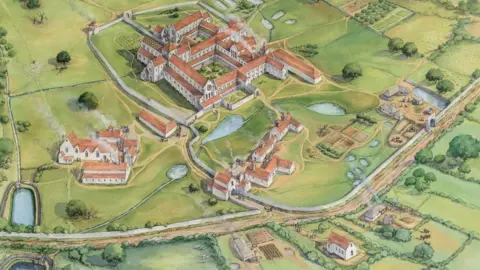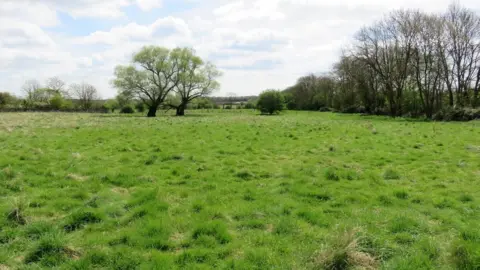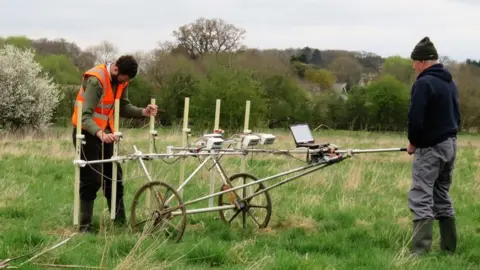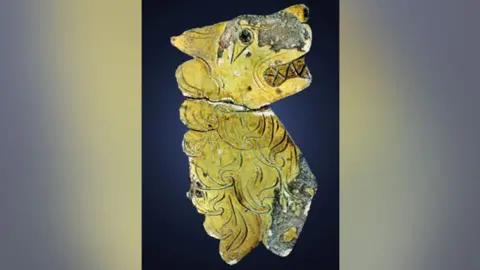Warden Abbey: Mystery of what Bedfordshire site looked like unveiled
 Peter Dunn/Old Warden History & Heritage Society
Peter Dunn/Old Warden History & Heritage SocietyThe mystery of what "one of the country's greater monasteries" would have looked like has been unveiled.
The painting, created by Peter Dunn, shows the grandeur of Warden Abbey - one of the most influential Cistercian houses in medieval England, Bedford Borough Council said.
It is being showcased at the Warden Abbey Revealed exhibition at The Higgins Bedford with other artefacts.
The abbey was founded in 1135 before being demolished in the 16th Century.
None of the building remains and its foundations were discovered in a geophysical survey in 2017.
 Margaret Roberts
Margaret RobertsMr Dunn, an archaeological illustrator, used the findings of a survey carried out by 30 volunteers at the Museum of London Archaeology to recreate the building that was home to about 100 monks.
Margaret Roberts, a member of the Old Warden History and Heritage Society, said she was "absolutely blown away" when she saw the painting.
"It's far more important than any of the other local monasteries - and it was one of the country's greater monasteries - we're delighted," she said.
"The abbey precinct extended to 157 acres, the largest in Britain, and contained pasture, gardens, orchards, vineyards, fish ponds and a lake.
"Because it's been a mystery for so long, it's lovely that everyone now has the chance to see it.
"This is all about the people who lived here up to 500 years ago. The detailed artwork gives us an indication of how they lived and what was important to them."
 Margaret Roberts
Margaret Roberts Margaret Roberts
Margaret RobertsMr Dunn said you can "never recreate exactly what the past was like". However, he said he could imagine the buildings through the geophysical survey and by cross-referencing remains of abbeys such as Rievaulx and Fountains in Yorkshire - with Cistercian monasteries being built with a standard layout.
"Sometimes little survives apart from geophysics results, excavated holes in the ground, ruined walls and landscapes that may have changed dramatically over hundreds of years," he said.
The painting aimed to create "a sense of place and time, to stimulate the viewer to look at, understand and ask questions about the past," he added.
 Southhill Estate
Southhill EstateThe artwork is on display along with archaeological artefacts recovered from the excavation at Warden Abbey in 1974, such as building fragments, floor tiles and stained glass.
The free exhibition runs until October 2022.
 C. Marshall/E. Baker/Southill Estate
C. Marshall/E. Baker/Southill Estate
Find BBC News: East of England on Facebook, Instagram and Twitter. If you have a story suggestion email [email protected]
